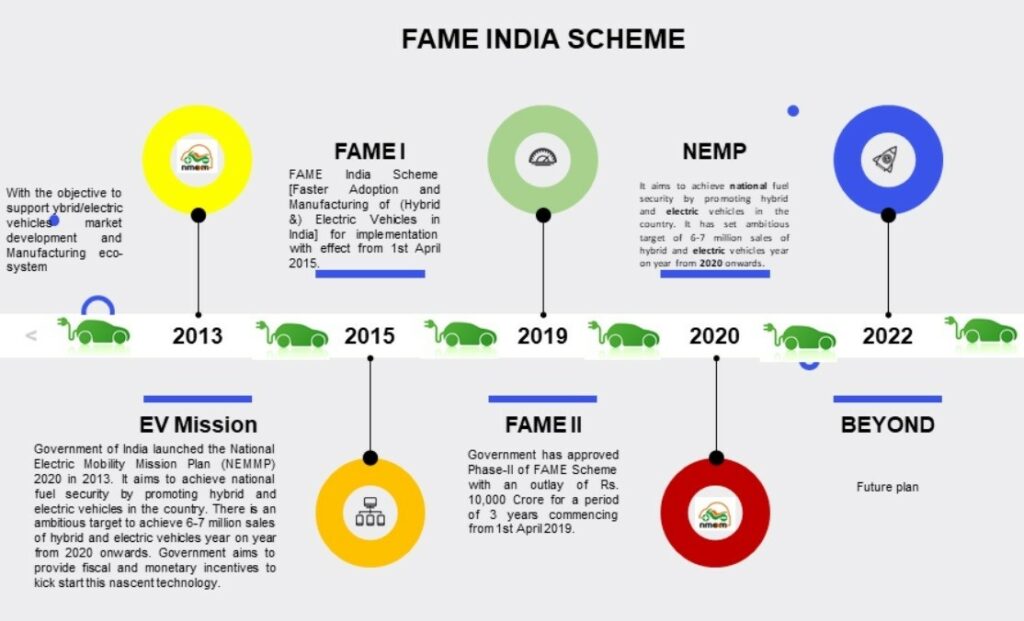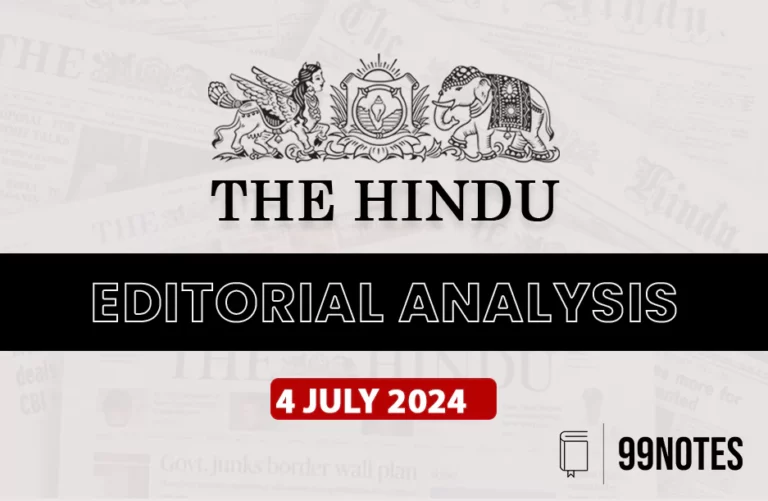21 June 2024 : The Hindu Editorial Analysis
1. The U.S.-Saudi agreement, from fist-bump to embrace
(Source – The Hindu, International Edition – Page No. – 9)
| Topic: GS2 – International Relations |
| Context |
|
Historical Context
- The United States and the Kingdom of Saudi Arabia have had a complex relationship over the past eight decades, marked by significant events like the oil embargo of 1973 and the Jamal Khashoggi assassination in 2018.
- Two iconic images symbolise this relationship: the 1945 meeting between U.S. President Franklin D. Roosevelt and King Abdul Aziz Al-Saud, and the 2022 fist-bump between U.S. President Joe Biden and Crown Prince Mohammed bin Salman (MbS).
The Emerging Strategic Alliance Agreement (SAA)
- The United States and Saudi Arabia are negotiating a Strategic Alliance Agreement (SAA), aiming to match Saudi Arabia’s regional ambitions with the United States’ diplomatic goals.
- The SAA is designed to address bilateral, regional, and global aspects of the relationship.
Bilateral Components
- The SAA may codify the bilateral alliance into a strategic defence pact, similar to the U.S.-Japan treaty, ensuring the United States’ commitment to Saudi Arabia’s defence.
- The United States might provide Saudi Arabia with advanced defence technology, including F-35 stealth fighters and nuclear technology for peaceful purposes.
Regional Components
- Saudi Arabia seeks a ceasefire in Gaza and progress towards a two-state solution to the Israel-Palestine conflict.
- The United States wants Saudi Arabia to recognize Israel and establish full diplomatic relations, and to limit its foreign policy engagements with Beijing and Moscow.
Global and Economic Components
- Despite the United States’ reduced dependence on Saudi oil, both countries are expected to maintain coordination to balance global energy markets.
- The SAA could ensure that American companies receive substantial portions of projects under Saudi Arabia’s Vision 2030.
Catalysts and Strategic Implications
- China’s increasing influence in Saudi Arabia, exemplified by President Xi Jinping’s state visit to Riyadh in December 2022, prompted the United States to strengthen its ties with Saudi Arabia.
- Saudi Arabia’s recognition of Israel could significantly alter the geopolitical landscape in West Asia and influence the broader Islamic world.
Challenges to the SAA
- A significant trust deficit has emerged between the United States and Saudi Arabia over the past decade, exacerbated by perceived U.S. ambivalence towards Iran and inconsistent support during regional conflicts.
- The ongoing Gaza conflict complicates Saudi Arabia’s potential reconciliation with Israel, which is crucial for the SAA’s approval by the U.S. Senate.
Potential Outcomes and Regional Impact
- A successful SAA could reinforce U.S. influence (Pax Americana) in the Gulf and West Asia, boost pro-West regimes, and diminish the Palestinian cause.
- Failure to achieve the SAA could result in continued regional instability, with non-state actors disrupting equilibrium and the region remaining contested by external powers.
- A partial agreement may emerge if a comprehensive SAA is unattainable, involving other friendly countries to fill gaps.
India’s Strategic Interests
- India, as a significant regional player, should monitor the evolving Strategic Alliance Agreement (SAA) closely.
- A successful SAA could enhance regional stability, create economic opportunities, and support the India-Middle East-Europe Economic Corridor.
- India should continue its “Act West” policy independently, ensuring readiness for any developments in the Saudi-Israeli relationship.
| Practice Question: Examine the potential implications of the proposed Strategic Alliance Agreement (SAA) between the United States and Saudi Arabia on regional stability and global geopolitics. (150 Words /10 marks) |
2. Should not EVs and Hybrids be treated equally for govt. subsidies?
(Source – The Hindu, International Edition – Page No. – 8)
| Topic: GS2 – Governance – Government policies |
| Context |
|
Introduction
- India’s road transport sector is a significant contributor to the country’s CO2 emissions, accounting for about 12% of the total, making it the third-largest greenhouse gas emitting sector after energy and agriculture.
- The Union government has been working towards decarbonising transport for nearly a decade through policies like the Faster Adoption and Manufacture of Hybrid and Electric Vehicles (FAME), introduced in 2015.
- The third iteration of this policy is expected to be announced in this year’s Union Budget.
Evolution of FAME Policy

- The FAME policy aims to boost demand for electric vehicles (EVs) and hybrids by subsidising retail sales, encouraging component manufacture, and developing an EV ecosystem nationwide.
- Policy Shift: Initially, the policy provided subsidies for both hybrids and EVs, but over time, subsidies for hybrids have been steadily removed. This shift has been met with mixed reactions, highlighting issues like lack of charging infrastructure, import dependence on advanced battery components, and a coal-dominated grid increasing EVs’ overall carbon footprint.
Government’s Decision to Withdraw Hybrid Subsidies
- Subsidy Withdrawal: In 2017, the government withdrew subsidy support for “mild hybrids,” which affected popular car models that previously took advantage of about 65% of the subsidy component.
- Rationale: The decision was based on the goal of moving towards emissions-free energy efficiency, prioritising where incentives provide the maximum value. The government recognised the limited amount of taxpayers’ money and aimed to optimise its use for transitioning to an emissions-free India.
Discussion on Emissions and Technology
- Emissions from Road Transport: Approximately 90% of emissions in transport come from road transport, with passenger cars contributing about 20% of this. Two-wheelers and three-wheelers, which constitute almost 80% of vehicle sales, have seen significant success in EV transition.
- Commercial Vehicles: Commercial vehicles, primarily freight vehicles, make up only 5% of the overall vehicle population but contribute 34% of emissions. However, the hybrid truck discussion remains absent.
- Hybrids and EVs Comparison: Strong hybrids offer 25-30% better fuel efficiency compared to internal combustion engines (ICE), but they are costly, falling into the luxury car segment. In contrast, EVs have zero tailpipe emissions but their overall emissions depend on the energy source used for charging.
Analysis of Emissions and Cost
- Lifecycle Emission Analysis (LCA): To evaluate the sustainability of any technology, LCA, which considers emissions from production to recycling, is crucial. This analysis reveals that, in many cases, emissions from EVs can be higher than from ICE vehicles, especially in a coal-dominated energy grid.
- Total Cost of Ownership (TCO): TCO, considering the cost per kilometre from production to end-of-life, often shows hybrids as the least polluting and most cost-effective option compared to EVs and ICE vehicles in India.
- Battery and Raw Materials: EVs require large amounts of metals like cobalt, nickel, and lithium, whereas hybrids manage with smaller battery packs, making them less dependent on scarce resources.
Policy Recommendations and Future Considerations
- Green Grid Transition: As India transitions to a greener grid, the overlap between electrifying transport and greening the grid is essential. EVs are more energy-efficient than ICE vehicles, utilising a higher percentage of energy for traction.
- Tax and Incentive Structure: The government should not choose technology but instead set life cycle emission and greenhouse gas norms. Subsidies should be carefully allocated to ensure maximum environmental and economic benefits.
- Comprehensive Policy Framework: Policies must evolve with changing technological and sectoral landscapes. This involves considering multiple calculations and factors, including fuel usage, charging rates, and overall cost to the user.
Conclusion
- A holistic approach to decarbonising the transport sector is needed, considering lifecycle emissions, total cost of ownership, and the broader goal of achieving energy security and climate goals.
- Both EVs and hybrids should be considered on an equal footing for subsidies, with policies supporting the most effective and sustainable technologies.
- Continuous evolution and adaptation of policies like FAME are crucial to address the dynamic nature of the transport sector and its impact on emissions and energy consumption.
| PYQ: The adoption of electric vehicles is rapidly growing worldwide. How do electric vehicles contribute to reducing carbon emissions and what are the key benefits they offer compared to traditional combustion engine vehicles? (250 words/15m) (UPSC CSE (M) GS-3 2023) |
| Practice Question: Discuss the challenges and opportunities associated with the decarbonization of India’s road transport sector, considering the government’s FAME policy and the reliance on coal-based power for electric vehicles. (250 Words /15 marks) |




